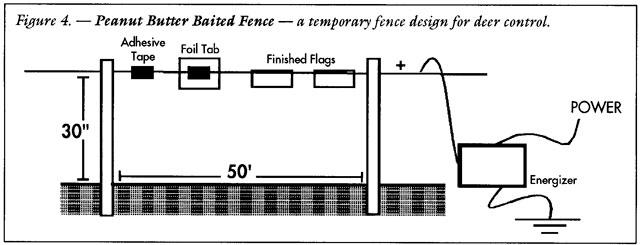Fencing
Deer Information:
Click on the following links to learn more:
Fencing
If hunting is not a viable option, fencing is the other valuable tool that will keep deer away from cropland. Fencing can provide consistent and effective deer damage control. Historically, farmers used the 8-foot woven wire fence (figure 2) to control deer damage. This is an extremely expensive option and may be too costly for most commercial agricultural use. It still remains a viable option under the right circumstances.
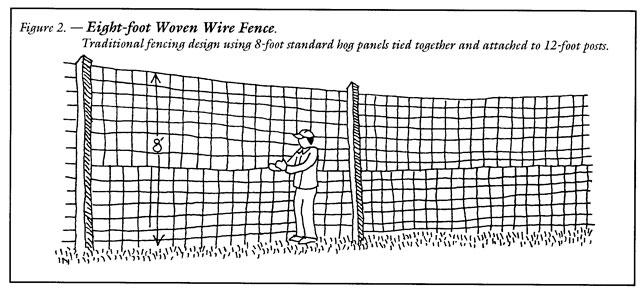
Figure 2 - 8-foot fence
An excellent alternative is to use low-cost electric fence designs. Current prices for these fences vary from 10 to 25 cents per running foot based on design and materials used. The most expensive component will be the charger Electric fences can be either permanent or temporary. Be aware electric fences require more maintenance and are not effective when not electrified.
These fences must be inspected regularly and the vegetation must be controlled to prevent grounding of the charged wires. In addition, the following guidelines will increase the effectiveness of electric fences:
•Build the fence before deer damage begins. It is easier to prevent a feeding pattern than it is to break one.
•Use a voltmeter to ensure the charge is a minimum of 3,000 volts.
•Clear a 6- to 8-foot open strip outside the perimeter of the fence.
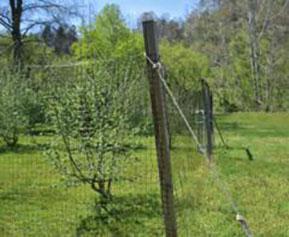
Permanent Fences
Permanent High-Tensile Electric Fence Designs
These electric fence designs should be used with pressure- treated posts that have a life-expectancy of 35 to 40 years. High-tensile electric fences are useful in protecting orchards, vegetable crops, nurseries, and other high dollar crops. These fences are powered by high voltage, low impedance chargers (New Zealand style) capable of charging 5,000 feet of fence with reduced susceptibility of grounding by vegetation. These fences use high-tensile smooth wire (200,000 psi, 12 1/2 gauge) and special accessories help to maintain a 150 to 250-lb tension so the fence can absorb the impact of running deer and spring back to its original position.
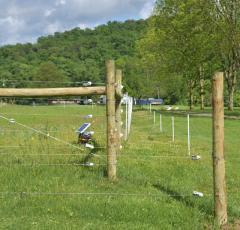
Temporary Electric Fence Designs
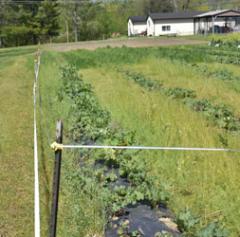
These fences are relatively inexpensive to construct because they do not have rigid corner assemblies and can be made of whatever materials are around the farm. These are low-profile fences and usually have 1 or 2 strands of wire. Fence lines are strung with 50 lbs of tension. If possible, use 2 x 2 insulated timbers (self-insulating posts made of eucalyptus wood) as corner posts to reduce the cost and increase the effectiveness of these fences.
The peanut butter baited fence design is made of a single 17-gauge smooth wire strung 30 inches above the ground (figure 4). The wire is connected to insulators attached to 4-foot stakes. Attach 3-inch x 4-inch strips of aluminum foil with cloth adhesive tape at 3-foot intervals. Apply a 1:1 mixture of peanut butter: vegetable oil to the tape strips. The idea is to attract deer to sniff the wire with its muzzle and receive a shock that acts as a deterrent.
